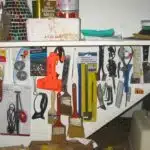A leaking bathtub faucet can be a frustrating experience for homeowners. Not only is the constant drip sound annoying, but it can also lead to higher water bills and potential damage to the surrounding area. As a plumbing expert, I have encountered numerous cases of leaking faucets and understand the importance of fixing them promptly.
In this article, we will discuss how to fix a leaking bathtub faucet step-by-step. Whether you are a homeowner or a renter, understanding how to fix this issue can save you time, money, and prevent further damage from occurring. By following these simple steps, you can take control of your plumbing situation and avoid the headache that comes with a malfunctioning faucet.
Identifying The Type Of Faucet
A leaky bathtub faucet can be a frustrating problem for homeowners. However, before attempting to fix the issue, it is crucial to determine the type of faucet installed in your bathtub. Common faucet types include compression faucets, ball faucets, cartridge faucets, and ceramic disk faucets. Each type of faucet has unique features that make it distinct from other types.
Troubleshooting common faucet issues can help identify the type of faucet installed in your bathtub. For instance, if there is water leaking from the spout when the handle is turned off, this could indicate a faulty valve seat or washer in a compression faucet. In contrast, if water is coming out from under the handle when it is turned on or off, this could indicate an issue with the O-ring or cartridge in a ball or cartridge-style faucet.
Once you have identified the type of faucet in your bathtub, you can proceed to gather the necessary tools and equipment needed for fixing the leak. It is essential to ensure that you have all the required items before starting any repairs. By doing so, you will save time and avoid making multiple trips to purchase additional tools or parts needed for fixing the leaky bathtub faucet.
Gathering The Necessary Tools
To properly fix a leaking bathtub faucet, you will need to gather the necessary tools. Having the right tools is crucial in ensuring that you can complete the task quickly and efficiently. Here are some tools that you may need:
- Wrenches – You may need a set of adjustable wrenches to remove the faucet handle and other components. It is important to choose a wrench that fits snugly around the nut or bolt to prevent damage to the fixture.
- Replacement parts – To fix a leaking bathtub faucet, you may need new washers, O-rings, or cartridges depending on your faucet type. Choosing the right replacement parts for your faucet model is essential in fixing the issue.
- Safety equipment – Before starting any plumbing work, it is important to take proper safety precautions such as wearing gloves and eye protection.
When gathering your tools, make sure that you have everything you will need before starting the repair process. Not having all of your tools ready can cause delays and make the job more difficult than it needs to be.
It is also important to note that if you are unsure about what tools or replacement parts are needed for your specific bathtub faucet, it may be best to consult with a professional plumber who can assist you in choosing the correct items.
With these necessary tools at hand, we can now move onto turning off the water supply before proceeding with repairing your leaking bathtub faucet.
Turning Off The Water Supply
One of the first steps in fixing a leaking bathtub faucet is to properly turn off the water supply. This is an important step because failing to do so can result in flooding and water damage, which can be costly to repair. According to a study conducted by the Insurance Information Institute, water damage accounts for nearly 30% of all homeowner insurance claims.
To avoid becoming part of this statistic, it is crucial that you know how to properly turn off the water supply before beginning any repairs on your bathtub faucet. The table below outlines the different types of water shut-off valves commonly found in homes and how to turn them off:
| Valve Type | How to Shut Off |
|---|---|
| Gate Valve | Turn clockwise until tight |
| Ball Valve | Turn lever 90 degrees |
| Globe Valve | Turn clockwise until tight |
While turning off the water supply may seem like a straightforward task, there are some common mistakes that people make when doing so. One mistake is not fully turning off the valve or turning it too hard, which can result in damaging the valve or causing leaks in other areas of your plumbing system. Another mistake people make is not checking if they have successfully turned off the water supply by testing their faucets before beginning repairs.
Before moving on to removing the handle of your leaking bathtub faucet, make sure that you have properly turned off the water supply using one of the methods outlined above and have tested your faucets to ensure that there is no more running water. By taking these precautions, you will prevent potential damage and accidents from occurring while making repairs.
Removing The Handle
After turning off the water supply, it is time to remove the handle of your leaking bathtub faucet. This is a crucial step in fixing your faucet as it will allow you to access the inner workings of the fixture. Begin by identifying the type of handle that you have, this can be either a knob or a lever handle.
Once you have identified your handle type, locate and remove the screw that holds it in place. You may need to use a screwdriver or an Allen wrench for this step. After removing the screw, gently pull off the handle and set it aside. You should now see a stem that extends from the valve body.
At this point, you can replace any worn-out washers or lubricate any parts that may be causing your leaky faucet. Here are four items to consider when replacing washers or lubricating parts:
- Use only high-quality replacement parts – low-grade parts are more likely to fail quickly and cause more leaks.
- Clean all surfaces before reassembling – any debris left behind can interfere with proper functioning of your faucet.
- Lubricate moving parts with silicone-based grease – avoid using petroleum-based products as they can damage rubber seals and other components.
- Tighten all screws and bolts securely but don’t over-tighten them – overtightening can lead to cracks in plastic components or stripped threads.
Moving forward, unscrewing the bonnet nut is the next step in fixing your leaking bathtub faucet. This task requires careful attention and precision as you will be working with sensitive components that could easily become damaged if mishandled.
Unscrewing The Bonnet Nut
To proceed with the repair of a leaking bathtub faucet, the next step is to unscrew the bonnet nut. The bonnet nut is the piece that holds the faucet assembly together and keeps it in place. It is located just below the handle of the faucet and can be removed by using an adjustable wrench.
Common issues that may arise during this step include difficulty in removing the bonnet nut due to corrosion or rust buildup. This can make it challenging to unscrew, but it can be resolved with some penetrating oil or by heating up the area around the nut with a hairdryer. Another issue may be overtightening of the bonnet nut which can cause damage to surrounding parts, so beginners should exercise caution when applying force.
Tips for beginners when attempting this step would be to turn off water supply valves before starting any repair work and to use a bucket or towel to catch any excess water that might come out during disassembly. It is also recommended to take pictures or videos of each step for reference when reassembling. Additionally, using high-quality tools such as an adjustable wrench will help make this process smoother and reduce damage risks.
Moving forward, once you have successfully removed the bonnet nut, you are now ready to remove the cartridge. But before proceeding, make sure you keep all parts organized and clean for proper reassembly later on.
Removing The Cartridge
The cartridge is an essential component of your bathtub faucet. If you notice that your faucet is leaking, the problem may lie in a damaged or worn-out cartridge. To fix this issue, you need to remove the cartridge from the faucet body. Here are some steps on how to do it.
Firstly, turn off the water supply to the faucet. Then, remove the handle and unscrew the retaining nut with a wrench. You can use pliers to pull out the cartridge gently. If it’s stuck, apply some lubricant and try again. Once removed, inspect the cartridge for any damage or wear and tear.
Cartridge replacement is often necessary if your bathtub faucet continues to leak after removing and cleaning it thoroughly. However, troubleshooting tips may help you determine if there are other underlying issues causing your leaky faucet. Before replacing anything, make sure all connections are secure and check for any cracks or breaks in pipes that might cause leaks in other parts of your plumbing system. In conclusion, removing the cartridge is an essential step towards fixing a leaky bathtub faucet, but remember to inspect it before deciding whether to replace it or not.
Transition: Now that you have successfully removed the cartridge from your faucet body let’s move onto how to inspect it for damage and wear and tear in our next section.
Inspecting The Cartridge For Damage
After turning off the water supply, the next step in fixing a leaking bathtub faucet is to inspect the cartridge for damage. The cartridge is the heart of your faucet and can be found just behind the handle. To access it, you’ll need to remove the handle and unscrew the retaining nut.
Once you have removed the cartridge, begin by checking for wear. Look for any signs of cracks or chips on its surface. If there are any visible defects, then it’s time to replace it. However, if there are no visible signs of damage, then proceed to lubricating the cartridge with silicone grease.
Lubricating the cartridge is an essential step that many people often overlook. By applying silicone grease to its O-rings and other moving parts, you can ensure that everything moves smoothly and prevent future leaks from occurring. With this step complete, you’re now ready to move on to replacing the cartridge itself.
Replacing The Cartridge
To replace the cartridge of a bathtub faucet, one must first remove the existing cartridge. Before doing so, it is important to turn off the water supply to the faucet. Once this has been done, remove any decorative handles or covers that may be covering the cartridge. A pair of pliers can then be used to grip and pull out the old cartridge.
After removing the old cartridge, it is important to clean out any debris or buildup inside the faucet body. This can be done using a small brush or cloth. It is also recommended to clean the cartridge itself by soaking it in vinegar for several hours or overnight. This will help dissolve any mineral deposits that may have built up inside.
Before installing the new cartridge, make sure to lubricate it with silicone grease. This will help ensure a smooth operation and prevent any future leaks. Once this has been done, insert the new cartridge into place and reassemble the faucet. Turn on the water supply and test for any leaks before using the faucet as normal.
Reassembling The Faucet
After successfully replacing the cartridge, it’s time to reassemble the faucet. Did you know that according to a recent study, a leaking bathtub faucet can waste up to 5 gallons of water per day? That’s equivalent to almost 2,000 gallons of water wasted in a year! By fixing your leaky faucet, not only will you save money on your water bill, but you’ll also be doing your part in conserving our natural resources.
To begin reassembling the faucet, start by reinstalling all the parts you removed during disassembly. Make sure each part is properly aligned and snugly fits into place. Once all parts are in their respective positions, tighten each connection with an adjustable wrench. Be careful not to overtighten as this can cause damage to the parts.
After tightening all connections and ensuring everything is back in its proper place, it’s time to turn on the water supply. Slowly open the shut-off valves and let the water flow for a few minutes before checking for any leaks. If there are no signs of leaks, congratulations! You have successfully fixed your leaking bathtub faucet and saved yourself some money while also conserving water.
Turning On The Water Supply
Once you have successfully installed the new faucet, it is time to turn on the water supply. However, it is important to take certain precautions before doing so. Make sure that all the valves are closed and you have turned off the power supply to avoid any accidents. Once you have done this, follow these steps:
Slowly turn on the main water valve: It is important to do this slowly and carefully, as turning on the valve too quickly can cause damage to the pipes or fittings.
Check for leaks: After turning on the water supply, check for any leaks around the faucet or pipes. If there are any leaks, immediately turn off the water supply and fix them.
Let the water run for a few minutes: It is important to let the water run for a few minutes after turning on the supply to ensure that there are no more leaks and that everything is working properly.
Common mistakes when turning on the water supply include forgetting to close all valves and not checking for leaks before letting the water run. Troubleshooting tips include checking all connections for tightness and ensuring that all valves are in their proper positions.
Now that you have successfully turned on your bathtub faucet’s water supply, it is time to move onto checking for leaks. By following these steps carefully, you will be able to fix your leaking bathtub faucet without any problems or complications.
Checking For Leaks
A leaking bathtub faucet can be a frustrating problem to have. The continuous dripping sound can be irritating, and the wasted water can increase your utility bills. It is crucial to check for leaks in your faucet regularly. Leaks may be caused by several factors, including loose parts, worn-out washers, or damaged O-rings.
The best way to prevent leaks in your bathtub faucet is to conduct regular maintenance checks. Common causes of leaks include high water pressure or hard water build-up that wears out the washers and other components in the faucet. To avoid these issues, ensure that you maintain moderate water pressure and use water softeners if you live in an area with hard water.
Prevention tips for leaky bathtub faucets include checking the valves and pipes regularly for any signs of wear or damage. Additionally, make sure that you tighten any loose connections as soon as possible. By taking preventive measures, you can avoid costly repairs down the line and prolong the lifespan of your bathtub faucet.
Adjusting the water pressure in your home’s plumbing system is an essential step towards preventing leaks in your faucets. High water pressure puts strain on your plumbing fixtures and may cause them to wear out faster than expected. In our next section, we will look at how to adjust the water pressure in your home’s plumbing system effectively.
Adjusting The Water Pressure
To ensure that your bathtub faucet does not leak, it is important to adjust the water pressure when necessary. But when should you adjust it and how? The answer lies in understanding the common causes of high water pressure in homes.
High water pressure can occur due to a variety of reasons such as malfunctioning pressure regulators, thermal expansion, or even municipal supply issues. If left unchecked, high water pressure can cause damage to plumbing fixtures and appliances. Therefore, it is essential to keep an eye on the water pressure and make adjustments as needed.
To adjust the water pressure, start by turning off all faucets and appliances that use water. Then locate the main shut-off valve and slowly turn it until you reach the desired level of water pressure. It is recommended to keep the pressure below 80 psi (pounds per square inch) for optimal performance and longevity of fixtures. Remember to periodically check the water pressure and make adjustments if necessary.
Nested bullet point list:
Common causes of high water pressure in homes:
Malfunctioning Pressure Regulators
Thermal Expansion
Municipal Supply Issues
Adjusting water pressure may seem like a daunting task but with proper guidance, it can be done easily. By following these steps along with keeping an eye on common causes of high water pressures at home, you can prevent leaks from occurring in your bathtub faucet. Now that we have adjusted our water pressure let’s move onto cleaning up the work area for a job well done!
Cleaning Up The Work Area
To ensure that the job is done correctly, it’s important to clean up the work area after fixing a leaking bathtub faucet. This not only makes the area look good but also helps in organizing tools and equipment for future use. The process of cleaning up the work area may seem tedious, but it is essential to prevent accidents and injuries.
Firstly, organize all tools and equipment used during the repair process. This will help you keep track of everything and avoid leaving any items behind. It’s easy to misplace small tools, so make sure you check drawers and cabinets before packing them away. Place larger items like wrenches or pliers in a tool bag or box for easier storage.
Secondly, store all cleaning supplies used during the repair safely. Cleaning products can be hazardous if left unattended, so make sure they are stored securely out of reach of children and pets. Labeling containers with cleaning solutions will also help identify what each solution is for future reference.
Lastly, once all tools and cleaning supplies have been organized and stored safely, give the work area a final inspection to ensure that everything is in order. You’ll feel more confident knowing that the area has been cleaned up properly, making it safer for everyone who uses your bathroom.
As part of regular maintenance tips, we recommend checking your bathtub faucet regularly to ensure it remains leak-free. A leaking faucet can cause water wastage which can lead to higher bills. In addition, regular checks will help detect any problems early on before they escalate into bigger issues that require more expensive repairs.
Regular Maintenance Tips
As a plumbing expert, I cannot stress enough the importance of prevention when it comes to plumbing issues such as leaks. Regular maintenance can save you from costly repairs and prevent potential damage to your home. A simple weekly inspection of your faucets, pipes, and valves can go a long way in ensuring that everything is in good condition.
One of the most common causes of leaks is wear and tear due to age or constant use. Taking preventative measures such as replacing worn-out gaskets or tightening loose connections can help avoid bigger problems down the line. Another cause of leaks is high water pressure. You can install a pressure regulator to keep the pressure at a safe level and prevent leaks from occurring.
In addition to regular inspections and preventative measures, it’s important to be mindful of what goes down your drains. Avoid pouring grease, oil, or harsh chemicals down your drains as these can cause clogs that lead to leaks. By following these tips and taking proper care of your plumbing system, you can avoid unnecessary expenses and ensure that your home remains in good condition for years to come.
When it comes to plumbing issues, sometimes it’s best to leave it to the professionals. In the next section, we will discuss when it’s time to call a professional plumber for assistance with more complex issues that require specialized knowledge and tools.
When To Call A Professional Plumber
As a plumbing expert, I understand the temptation to try and fix a leaking bathtub faucet on your own. However, before you decide to tackle the job yourself, there are important factors to consider such as time and cost. While DIY might seem like an attractive option for those on a budget, it’s essential to weigh the pros and cons of hiring professionals versus doing it yourself.
One key consideration is the amount of time it will take to complete the task. Fixing a leaking bathtub faucet may seem simple but can quickly turn into a time-consuming project that requires specialized tools and expertise. If you lack experience or knowledge of plumbing systems, attempting a DIY repair can result in costly mistakes that could ultimately make things worse.
Another factor to consider is cost. While hiring a professional plumber may seem expensive upfront, it can actually save you money in the long run by preventing further damage or future repairs. Emergency plumbing services can be especially costly if you don’t have access to reliable resources or if you choose an unqualified contractor.
Choosing the right plumbing company is crucial when seeking professional help for your bathtub faucet leak. Look for companies with good reputations and positive reviews from previous customers. Additionally, always ensure that any company you hire has appropriate licensing and insurance coverage. A professional plumber will thoroughly evaluate your plumbing issue and provide quality workmanship at a fair price.
Conclusion
A leaking bathtub faucet can be a frustrating problem for any homeowner. However, with the right tools and knowledge, this issue can be easily fixed. Firstly, identifying the type of faucet is crucial to determine the appropriate steps required to fix it. Once identified, turning off the water supply and removing the handle is necessary to access the internal components of the faucet.
Next, unscrewing the bonnet nut and adjusting the water pressure will help resolve any leaks. It’s important to clean up the work area and conduct regular maintenance to prevent future leaks. However, if you encounter any difficulties or feel unsure about fixing your faucet, it’s best to call a professional plumber.
One anticipated objection may be that fixing a leaking bathtub faucet is too difficult or time-consuming for someone without plumbing expertise. However, by following these simple steps and having patience with the process, anyone can successfully fix their leaking bathtub faucet. Plus, proper maintenance and regular inspections can save homeowners money in costly repairs in the long run. As a plumbing expert, I highly recommend taking care of small issues like this promptly to avoid more significant problems down the line.
Image Credits
- “Bathtub Faucet” by unbearablyvapid (featured)




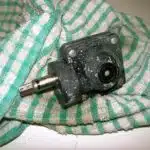

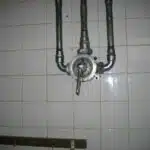
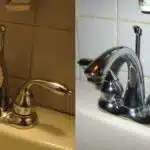

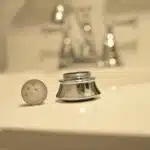

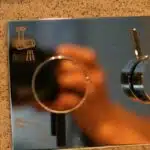



![How To Replace A Bathtub Drain In A Mobile Home 15 2/365 [Bathtub Drain]](https://green-life.blog/wp-content/uploads/2023/05/3ft8KAJsNnjq-150x150.jpg.webp)

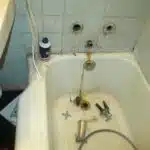




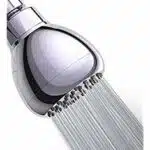
![How To Get Hair Out Of A Bathtub Drain 23 2/365 [Bathtub Drain]](https://green-life.blog/wp-content/uploads/2023/05/cOEu5edpkejq-150x150.jpg.webp)



